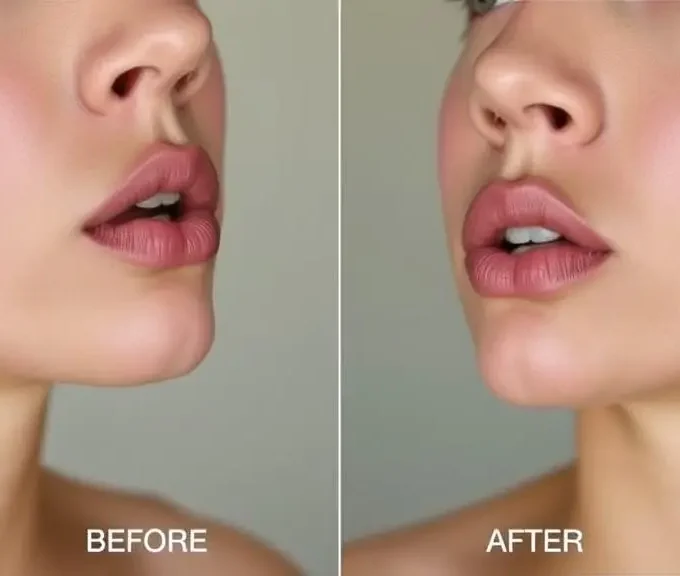Are your eyes constantly dry, itchy, or irritated even after using over-the-counter eye drops? You’re not alone. Millions struggle with dry eyes every day, often caused by screen time, aging, or environmental triggers. But conventional eye drops aren’t always the answer. Some contain preservatives or harsh chemicals that can worsen symptoms over time. That’s why more people are turning to homeopathic eye drops, a gentler, natural approach to eye relief. In this guide, the top 5 homeopathic eye drops for dry eyes will help you find soothing relief without the side effects.
What Are Homeopathic Eye Drops and How Do They Work?
Homeopathic eye drops are formulated using diluted natural substances like plants and minerals. Based on the principle of “like cures like,” homeopathy believes that a substance causing symptoms in a healthy person can, in tiny amounts, help treat those same symptoms. Common ingredients include Euphrasia (Eyebright) for inflammation and Belladonna for redness. Unlike many conventional drops, these are often preservative-free, making them gentler on sensitive eyes. While clinical research is ongoing, many users report relief from dryness, burning, and irritation. Homeopathic eye drops offer a natural alternative for those seeking chemical-free solutions.
Clinical Considerations for Selecting Homeopathic Eye Drops
The efficacy and safety of homeopathic eye drops for dry eye relief depend on several formulation-specific factors. A careful evaluation of these attributes can help patients and practitioners choose Drops that support ocular surface health while minimizing the risk of irritation.
Preservative-Free Formulation
Preservatives, particularly benzalkonium chloride (BAK), are known to cause toxicity and inflammation in the ocular surface with prolonged use. Choosing preservative-free drops is essential for individuals with chronic dry eye or sensitivity to chemical agents.
Symptom-Specific Homeopathic Ingredients
Active ingredients should be selected based on the patient’s predominant symptoms. Euphrasia officinalis (Eyebright) is commonly indicated for inflammation and burning; Apis Mellifica is used for edema and stinging discomfort; and Belladonna may alleviate redness and dryness. Proper ingredient matching enhances therapeutic outcomes.
pH and Osmolarity Compatibility
A solution that is pH-balanced and isotonic helps maintain tear film stability and reduces the likelihood of irritation upon instillation. This is particularly important in patients with already compromised tear quality.
Regulatory Quality and Product Integrity
Clinically sound choices should be limited to products manufactured under strict quality assurance standards. Look for certifications of compliance with recognized homeopathic pharmacopeias or organic certification programs to ensure purity, sterility, and consistency.
When chosen correctly, homeopathic eye drops can serve as a supportive treatment in managing dry eye symptoms, especially for individuals seeking a non-pharmaceutical or adjunctive therapy.
Top 5 Homeopathic Eye Drops for Dry Eyes
Finding the right remedy for dry eyes can be overwhelming, especially when you’re searching for a solution that’s both natural and effective. To make your decision easier, we’ve carefully reviewed and compared the most trusted homeopathic eye drops on the market. Each of these products is preservative-free, gentle on the eyes, and designed to offer real relief for dry, irritated eyes.
1. Similasan Dry Eye Relief
It is one of the most recognized and accessible options in natural eye care. It contains Euphrasia (Eyebright), Belladonna, and Mercurius sublimatus — ingredients traditionally used to relieve irritation and redness. Similasan is widely available in pharmacies and online, and it’s safe for contact lens wearers. Many users report that it provides soothing relief without the stinging sensation often experienced with conventional eye drops. One reviewer mentioned, “Feels soothing with no stinging. Works better than my previous OTC drops.”
2. Homeoptic Eye Drops
Homeoptic Eye Drops combine plant-based dilutions, including Euphrasia and Calendula, and are clinically tested in European studies. Homeoptic was more effective than saline in improving dry eye symptoms. It’s especially well-suited for daily use and individuals who suffer from screen-related eye fatigue or mild inflammation. A satisfied user shared, “Great for my dry eyes caused by computer strain.
3. Hyland’s Naturals Dry Eye Drops
Hyland’s Naturals Dry Eye Drops are formulated with Apis Mellifica, Euphrasia, and Belladonna. This Drops is ideal for those dealing with occasional dryness or eye irritation linked to allergies. The drops are available in single-use vials for easy, hygienic application and are also offered in oral tablet form for holistic symptom relief. A user remarked, “Noticeable improvement within days. I like that it’s completely natural.”
4. Natural Ophthalmics Tear Stimulation Drops
Natural Ophthalmics Tear Stimulation Drops were developed by optometrists and designed to support the body’s natural tear production process. With active ingredients such as Euphrasia, Sulphur, and Calcarea carbonica, they are an excellent choice for adults experiencing age-related dryness or long-term eye discomfort. According to long-term users, this product stands out for its ability to deliver results when other treatments have failed. As one testimonial put it, “It’s the only thing that worked after years of suffering.”
5. BioActive Nutritional OcuHealer
BioActive Nutritional OcuHealer is a blend of homeopathic ingredients and herbal compounds, including Euphrasia and Ruta graveolens. It is best suited for individuals experiencing eye strain from prolonged screen time. Lightweight and non-greasy, this formula is ideal for evening use and has been praised for its calming effect.
Choosing the Right Drop
When selecting a homeopathic remedy, it’s important to match the active ingredients to your specific symptoms. Euphrasia works well for burning and irritation, Apis helps with swelling and puffiness, and Belladonna targets redness and dryness. Each product offers a different combination to suit a variety of needs, so consider your symptoms carefully and choose accordingly.
Side Effects and Safety Considerations
One of the biggest advantages of using homeopathic eye drops is their minimal risk of side effects. Most formulations are preservative-free, making them suitable for sensitive eyes and even for long-term use. However, it’s still important to use them correctly and monitor for any unexpected reactions.
Possible (but rare) side effects:
- Mild stinging or burning upon application (usually temporary)
- Temporary blurred vision
- Sensitivity to specific ingredients like Belladonna or Apis
Always check the label for allergens and avoid expired products. If you experience persistent discomfort, discontinue use and consult an eye care professional.
How to Use Homeopathic Eye Drops Correctly
Using homeopathic eye drops the right way ensures you get the maximum benefit with minimal irritation. While they’re generally safe, following proper application methods improves effectiveness.
Step-by-Step Application:
- Wash your hands thoroughly before touching the bottle or your eye.
- Tilt your head back and look upward.
- Gently pull down your lower eyelid to create a small pocket.
- Drop 1–2 drops into the lower eyelid, avoiding contact with the dropper tip.
- Close your eyes for 30 seconds and avoid blinking excessively.
Most Drops can be used 2–4 times daily or as needed. For chronic dry eye, consistency is key. Store drops in a cool, dry place, and always check the expiration date.
Conclusion
If you’re looking for a gentle, preservative-free solution for dry, irritated eyes, homeopathic eye drops might be the right fit. While they may not replace prescription treatments for severe conditions, they offer a natural, effective option for mild to moderate symptoms. Products like Similasan and Homeoptic have helped thousands find soothing relief without side effects or chemical exposure.
Frequently Asked Questions
Which eye drops can improve vision?
Most eye drops do not directly improve vision, but some may temporarily enhance visual clarity by relieving dryness, reducing inflammation, or flushing irritants. Prescription drops like pilocarpine or newer agents such as Vuity (for presbyopia) are formulated to improve near vision, while homeopathic eye drops focus on comfort and hydration.
What is the most natural eye lubricant?
The most natural eye lubricants are preservative-free artificial tears and homeopathic eye drops containing Euphrasia or Calendula. These are gentle on the eyes and avoid synthetic additives, making them ideal for sensitive users.
How to fix dry eyes without eye drops?
Lifestyle changes such as using a humidifier, reducing screen time, staying hydrated, applying warm compresses, and incorporating omega-3 fatty acids into your diet can significantly reduce dry eye symptoms without relying on drops.
How to clean your eyes naturally?
Use a sterile saline solution or clean water with a cotton pad to gently cleanse your eyelids. Warm compresses can also help loosen debris and improve tear gland function. Avoid using soaps or harsh chemicals near the eyes.












Leave a comment